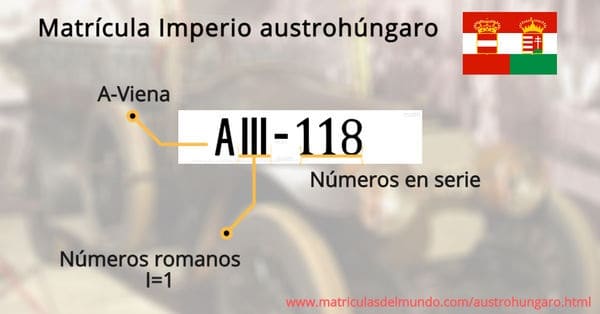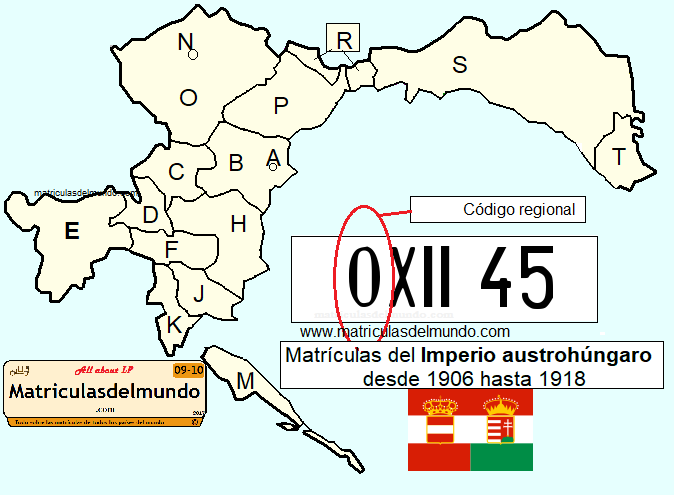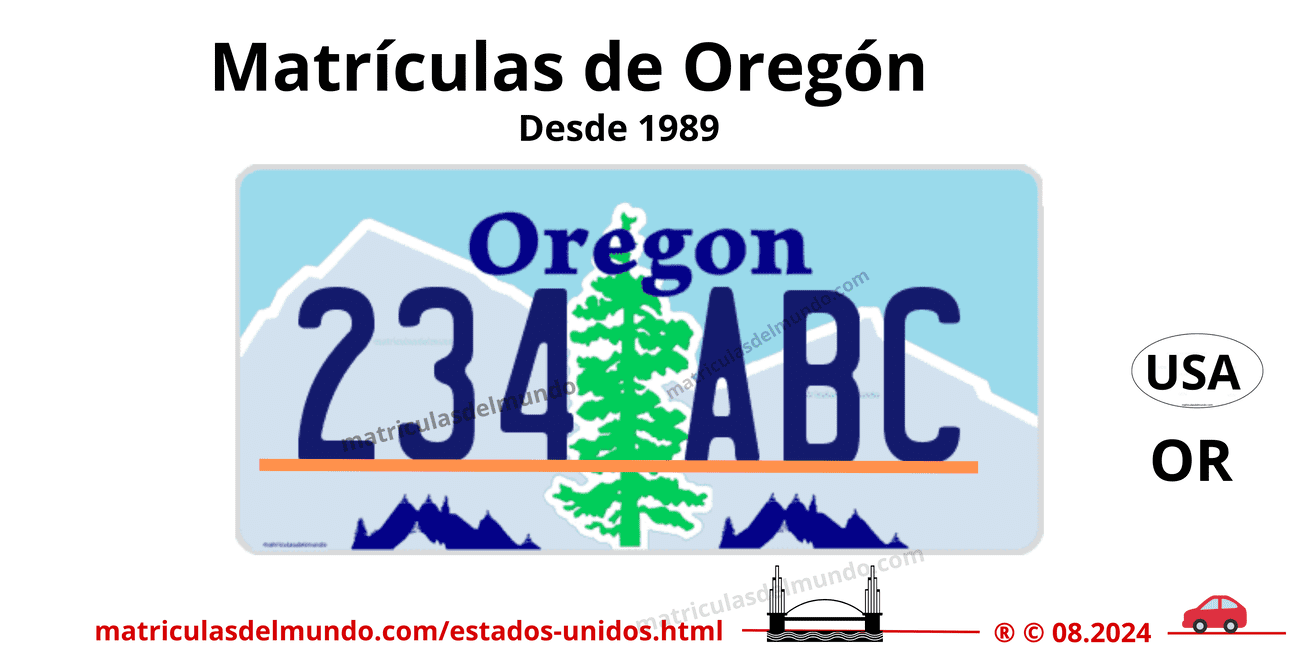Austro-Hungarian Empire license plate (A & H) in 2026 ✅
Austro-Hungarian car license plates appeared in 1895 and were regulated in 1905. The Austro-Hungarian license plate system was used until the fall of the Empire in 1918, although some states kept it for a few years longer. Austro-Hungarian license plates were black on white background, consisting of a letter identifying the region followed by one to three numbers. Austro-Hungarian license plates were characterized by the use of Roman numerals.
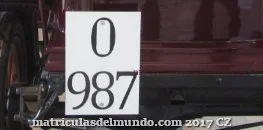

Language: German and Hungarian
International code: A & H
In Austro-Hungarian Empire they drive on the left
First plate was registered on: 1895-1905.
There are cars per 1000 inhabitants.
Continent: Europe
Table of contents of Austro-Hungarian Empire license plates

Austro-Hungarian Empire License Plates – System and Operation
The Austro-Hungarian Empire existed between 1867 and 1918. Throughout this period, it implemented its own vehicle license plate system, although minor differences existed across various regions of the empire. After its dissolution, some of the newly formed states continued to use the same license plate structure, such as Czechoslovakia, which retained the system until 1932. These license plates featured black characters on a white background, with a structure consisting of a letter representing the region or zone, followed by Roman numerals, a dash, and then a series of Latin numbers.
Vehicle of Archduke Franz Ferdinand (Learn more)
History of Vehicle Registration Plates in the Austro-Hungarian Empire
License plates in the Austro-Hungarian Empire began to appear in 1906. The earliest registrations featured black characters on a white background. The structure included a regional identifying letter followed by a numeric sequence from 1 to 999. Once numbers were exhausted, Roman numerals were inserted after the letter (e.g., I, II, III...). The initial letter identified the region, while the numeric blocks were allocated per city or district. For more details, see the regional codes of Austro-Hungarian license plates.
Hungarian License Plates in the Austro-Hungarian Empire
The first plates in Hungary simply displayed the owner’s name. From 1901 onward, numeric plates began with number 1. As of May 1, 1910, Hungary adopted white-on-black plates measuring 150mm wide. These plates used a regional letter followed by a number from 1 to 999. In Budapest, Roman numerals were used as a prefix (up to X), e.g., III-123. See the complete list of Hungarian codes at this section.
Bosnia and Herzegovina License Plates in the Austro-Hungarian Empire
License plates in what is now Bosnia and Herzegovina used a regional letter followed by digits. Sarajevo, however, used only numeric sequences with no prefix letter. You can find detailed regional codes in this section on Bosnia and Herzegovina.
Czechoslovakian Regions under the Austro-Hungarian Empire
In the regions that would later become Czechoslovakia, plates began with one of four letters: N, O, P, or R. The letter N was exclusively assigned to Prague. License plates featured black characters on a white background and began with a letter followed by one to three digits. After reaching 999, the series continued with Roman numerals (e.g., P I-1, P I-2...). Refer to Bohemia codes and Silesia codes for more details.
Austria License Plate Codes in the Austro-Hungarian Empire
| License Code | Region | Present-day Country | Image |
|---|---|---|---|
| A | Vienna | Austria |  |
| B | Lower Austria (Niederösterreich) | Austria | |
| C | Upper Austria (Oberösterreich) | Austria | |
| D | Salzburg | Austria | |
| E | Tyrol | Austria | |
| F | Carinthia (Kärnten) | Austria | |
| H | Styria (Steiermark) | Austria | |
| J | Krain | Slovenia | |
| K | Istria (Küstenland) | Slovenia, Croatia | |
| M | Dalmatia | Croatia | |
| N | Prague | Czech Republic | 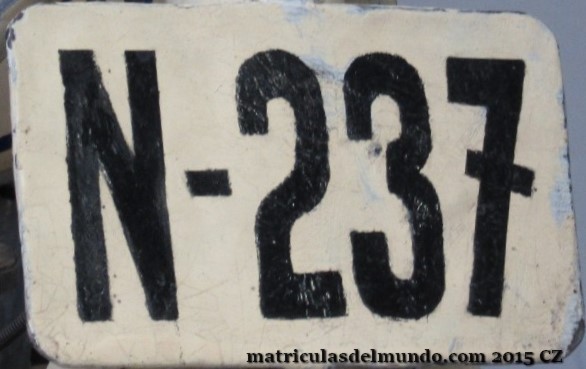 |
| O | Bohemia (Böhmen) | Czech Republic |  |
| P | Moravia (Mähren) | Czech Republic | |
| R | Silesia | Czech Republic, Poland | |
| S | Galicia | Poland, Ukraine | |
| T | Bukovina | Ukraine, Romania | |
| W | Vorarlberg | Austria |
License Plate Codes of the Austro-Hungarian Empire in Hungary
| Code | Region | Present-day Country | Image |
|---|---|---|---|
| Roman numerals | Budapest | Hungary | |
| B | District of Budapest | Hungary | |
| C | Autonomous Region of Croatia | Croatia | |
| D | Debrecen | Hungary | |
| E | Pécs | Hungary | |
| F | Fiume | Slovenia | |
| G | Győr | Hungary | |
| K | Košice | Slovakia | |
| O | Cluj (Kolozsvár) | Romania | |
| P | Bratislava (Pozsony) | Slovakia | |
| R | Brașov | Romania | |
| S | Szeged | Hungary | |
| T | Timișoara | Romania | |
| Y | Temporary |
License Plate Codes of Bosnia and Herzegovina in the Austro-Hungarian Empire
| Code | Region | Image |
|---|---|---|
| A | Banja Luka | |
| B | Bihać | |
| D | Tuzla | |
| M | Mostar | |
| S | Sarajevo Region | |
| T | Travnik |
Bohemi codes
* Name of cities in Czech.
| Numeración | Región | Imagen |
|---|---|---|
| O 1-20 | Aš | |
| O 21-70 | Ústi nad Labem | |
| O 71–100 | Benešov | |
| O 101–115 | Horšovský Týn | |
| O 116–120 | Blatná | |
| O 121–145 | Český Brod | |
| O 146–185 | Česká Lípa | |
| O 186–210 | Broumov | |
| O 211–310 | Most | |
| O 311–410 | České Budějovice | |
| O 411–425 | Chotěboř | |
| O 426–445 | Chrudim | |
| O 446–460 | Čáslav | |
| O 461–475 | Dubá | |
| O 476–495 | Havlíčkův Brod | |
| O 496–575 | Duchcov | |
| O 576–600 | Cheb | |
| O 601–650 | Sokolov | |
| O 651–700 | Frýdlant | |
| O 701–740 | Jablonné v Podještědí | |
| O 741–790 | Jablonec nad Nisou | |
| O 791–805 | Kraslice | |
| O 806–825 | Vrchlabí | |
| O 826–865 | Vysoké Mýto | |
| O 866–875 | Hořovice | |
| O 876–900 | Jičín | |
| O 901–910 | Jáchymov | |
| O 911– I 10 | Mladá Boleslav | |
| O I 11–20 | Kadaň | |
| O I 21–30 | Kamenice nad Lipouy | |
| O I 31–40 | Kaplice | |
| O I 41–65 | Karlovy Vary | |
| O I 66–95 | Karlín | |
| O I 96–135 | Kladno | |
| O I 136–155 | Chomutov | |
| O I 156–335 | Kolín | |
| O I 336–360 | Chomutov | |
| O I 361–460 | Hradec Králové | |
| O I 461–500 | Dvůr Králové nad Labem |
|
| O I 501–530 | Kralovice | |
| O I 531–540 | Český Krumlov | |
| O I 541–565 | Kutná Hora | |
| O I 566–575 | Lanškroun | |
| O I 576–605 | Louny | |
| O I 606–610 | Ledeč nad Sázavou | |
| O I 611–640 | Litoměřice | |
| O I 641–655 | Litomyšl | |
| O I 656–665 | Žlutice | |
| O I 666–685 | Mariánské Lázně | |
| O I 686–695 | Mělník | |
| O I 696–715 | Stříbro | |
| O I 716–720 | Týn nad Vltavou | |
| O I 721–725 | Milevsko | |
| O I 726–775 | Mnichovo Hradiště | |
| O I 776–785 | Náchod | |
| O I 786–810 | Nový Bydžov | |
| O I 811–820 | Jindřichův Hradec | |
| O I 821–855 | Nová Paka | |
| O I 856–875 | Nové Město nad Metují | |
| O I 876–915 | Pardubice | |
| O I 916–925 | Pelhřimov | |
| O I 926–975 | Pilsen (Plzeň) | |
| O I 976–990 | Písek | |
| O I 991–999 | Planá | |
| O II 1–30 | Poděbrady | |
| O II 31–80 | Podbořany | |
| O II 81–85 | Polička | |
| O II 86–100 | Prachatice | |
| O II 101–105 | Přeštice | |
| O II 106–125 | Příbram | |
| O II 126–135 | Rakovník | |
| O II 136–155 | Roudnice | |
| O II 156–205 | Rychnov nad Kněžnou | |
| O II 206–455 | Liberec | |
| O II 456–485 | Rokycany | |
| O II 486–585 | Rumburk | |
| O II 586–655 | Žatec | |
| O II 656–705 | Slaný | |
| O II 706–725 | Šluknov | |
| O II 726–775 | Sušice | |
| O II 776–780 | Sedlčany | |
| O II 781–810 | Semily | |
| O II 811–840 | Žamberk | |
| O II 841–850 | Smíchov | |
| O II 851–870 | Jilemnice | |
| O II 871–910 | Strakonice | |
| O II 911–930 | Tábor | |
| O II 931–940 | Tachov | |
| O II 941–950 | Domažlice | |
| O II 951–955 | Teplá | |
| O II 956– III 999 | Teplice | |
| O III 56–85 | Děčín | |
| O III 86–145 | Trutnov | |
| O III 146–175 | Turnov | |
| O III 176–185 | Vinohrady | |
| O III 186–190 | Třeboň | |
| O III 191–210 | Žižkov | |
| O III 211–260 | Ciudad de Liberec |
License Plate Codes of Silesia in the Austro-Hungarian Empire
* Most city names have been adapted to modern Czech/Polish.
| Number Range | Region | Image |
|---|---|---|
| R 1–49 | Bielsko-Biała | |
| R 50–99 | Bielsko-Biała | |
| R 100–149 | Český Těšín, Cieszyn | |
| R 150–199 | Fryštát | |
| R 200–249 | City of Frýdek | |
| R 250–299 | Frýdek | |
| R 300–349 | Slezská Ostrava (Silesian Ostrava) | |
| R 350–399 | Bílovec | |
| R 400–449 | City of Opava | |
| R 450–499 | Opava | |
| R 500–549 | Krnov | |
| R 550–599 | Bruntál | |
| R 600–649 | Jeseník |
☛ Which code identifies cars from Austro-Hungarian Empire?
The code A & H identifies Austro-Hungarian Empire. The license plates of Austro-Hungarian Empire may be used with the international registration code A & H next to it on the back part of the car.
Example of a car with the international recognition code of Austro-Hungarian Empire
Below you can find a car with the oval code and international recognition of Austro-Hungarian Empire which is A & H.
Questions and answers about car license plates in Austro-Hungarian Empire 🥇
Where is the code A & H in a license plate from?
The international code A & H identifies Austro-Hungarian Empire, in Europe.
Which country uses the code A & H on its license plate?
The country that uses the code A & H on its car license plate system is Austro-Hungarian Empire.. The letter or letters A & H always identify Austro-Hungarian Empire. The international code A & H must always be displayed on the rear of the vehicle inAustro-Hungarian EmpireSpain in an oval in black characters on a white background when travelling abroad, except in very rare cases.
When did Austro-Hungarian Empire have its first ordinary car license plate?
The date of the first car license plate registration officially issued in Austro-Hungarian Empire was in 1895-1905.
Which side of the road do people drive on in Austro-Hungarian Empire?
In Austro-Hungarian Empire, you drive on the left side of the road.
On which continent is Austro-Hungarian Empire located?
Austro-Hungarian Empire is located in the continent . You can check how are the license plates of Europe following the link to the general section within matriculasdelmundo. Car license plates in Europe
What are license plates from Austro-Hungarian Empire called in other English-speaking couuntries?
In English, license plate of Austro-Hungarian Empire is commonly called a license plate of Austro-Hungarian Empire in the United States and Canada. In the UK and Australia, it’s often known as a number plate of Austro-Hungarian Empire. Another term, registration plate of Austro-Hungarian Empire, is understood globally and is slightly more formal. All these terms refer to the same vehicle identification plate of Austro-Hungarian Empire, with usage varying by country. Car plate of Austro-Hungarian Empire can be used in more technical situations.
Is it the same a license plate of Austro-Hungarian Empire and a registration plate of Austro-Hungarian Empire?
Yes, both license plate of Austro-Hungarian Empire and registration plate of Austro-Hungarian Empire can be used to refer the same vehicle registration unique number of Austro-Hungarian Empire.
Cite this section about the license plates of Austro-Hungarian Empire
Matriculasdelmundo. License plates of Austro-Hungarian Empire. Reviewed and updated information. Matriculasdelmundo.com. Retrieved on 13/12/2025 from https://
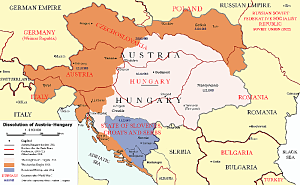
Map of the Austro-Hungarian Empire license plates
Copyright 2025 www.matriculasdelmundo.com
Official Sources on License Plates of Austro-Hungarian Empire
All the information about the license plates of cars and motorcycles in Austro-Hungarian Empire and vehicle plates shown here has been extracted from official state archives (such as the BOE and the DGT in Spain), from personal sightings, by contacting automobile clubs from other countries, or through media or files referenced in the text. This information on car and motorcycle plates in Austro-Hungarian Empire has been collected since 2009, so we hope you find the information you're looking for about Austro-Hungarian Empire license plates.
😊 You can send us your comments and photos via the form or email us at matriculasdelmundo@gmail.com, and we will be happy to respond.
Copying, either in whole or in part of the information displayed on each section of matriculasdelmundo is prohibited, except in specific cases and with the site's administration's permission.

